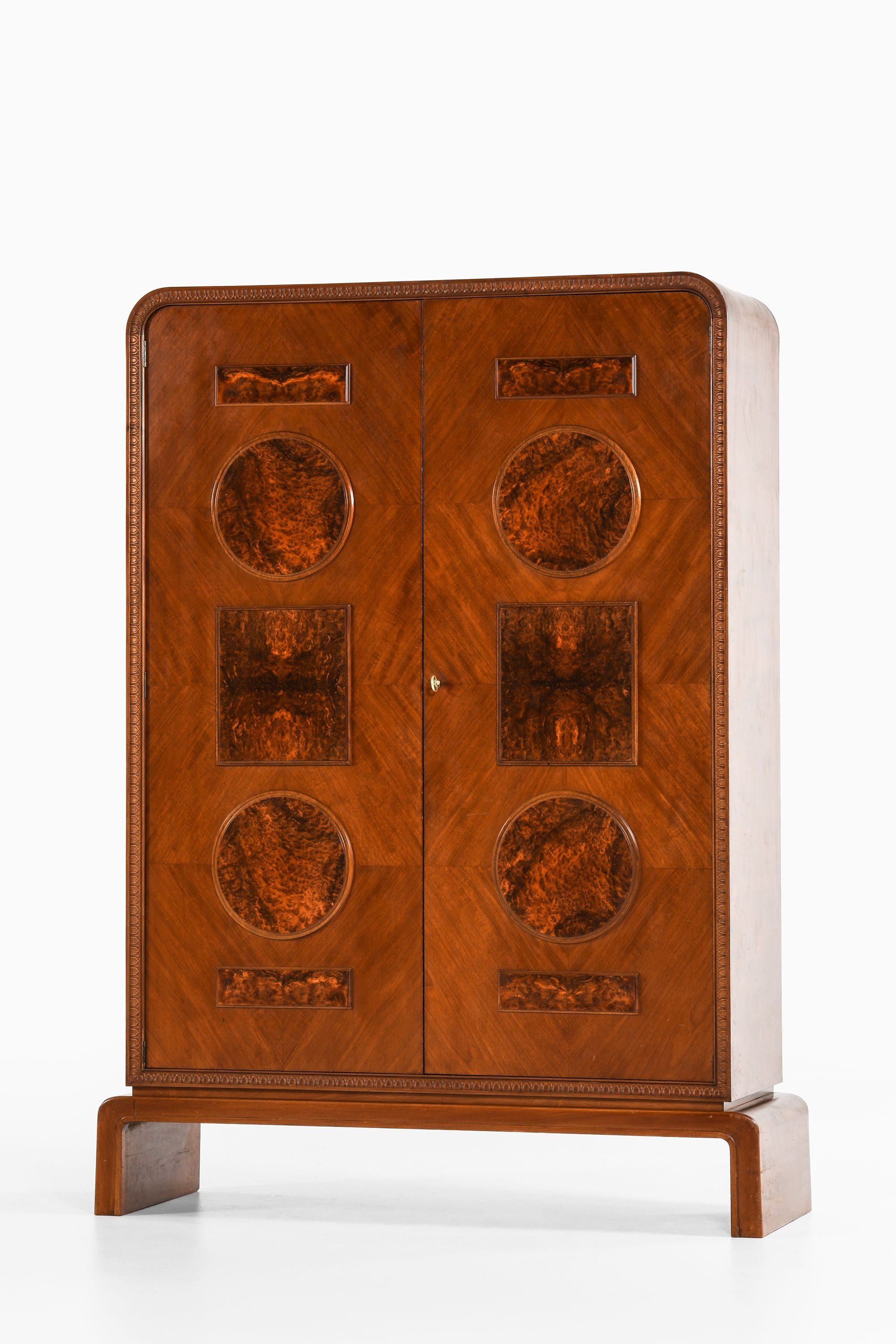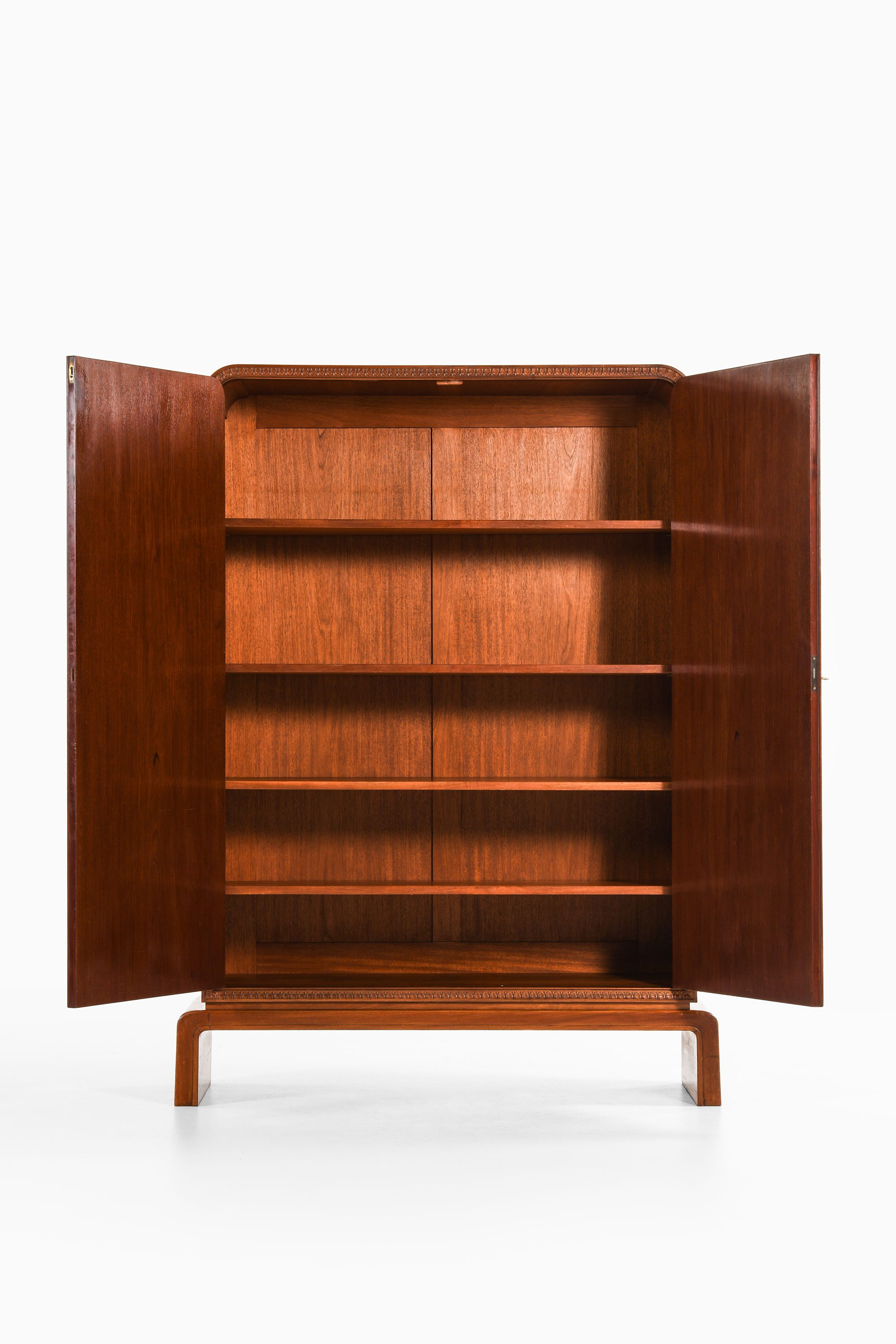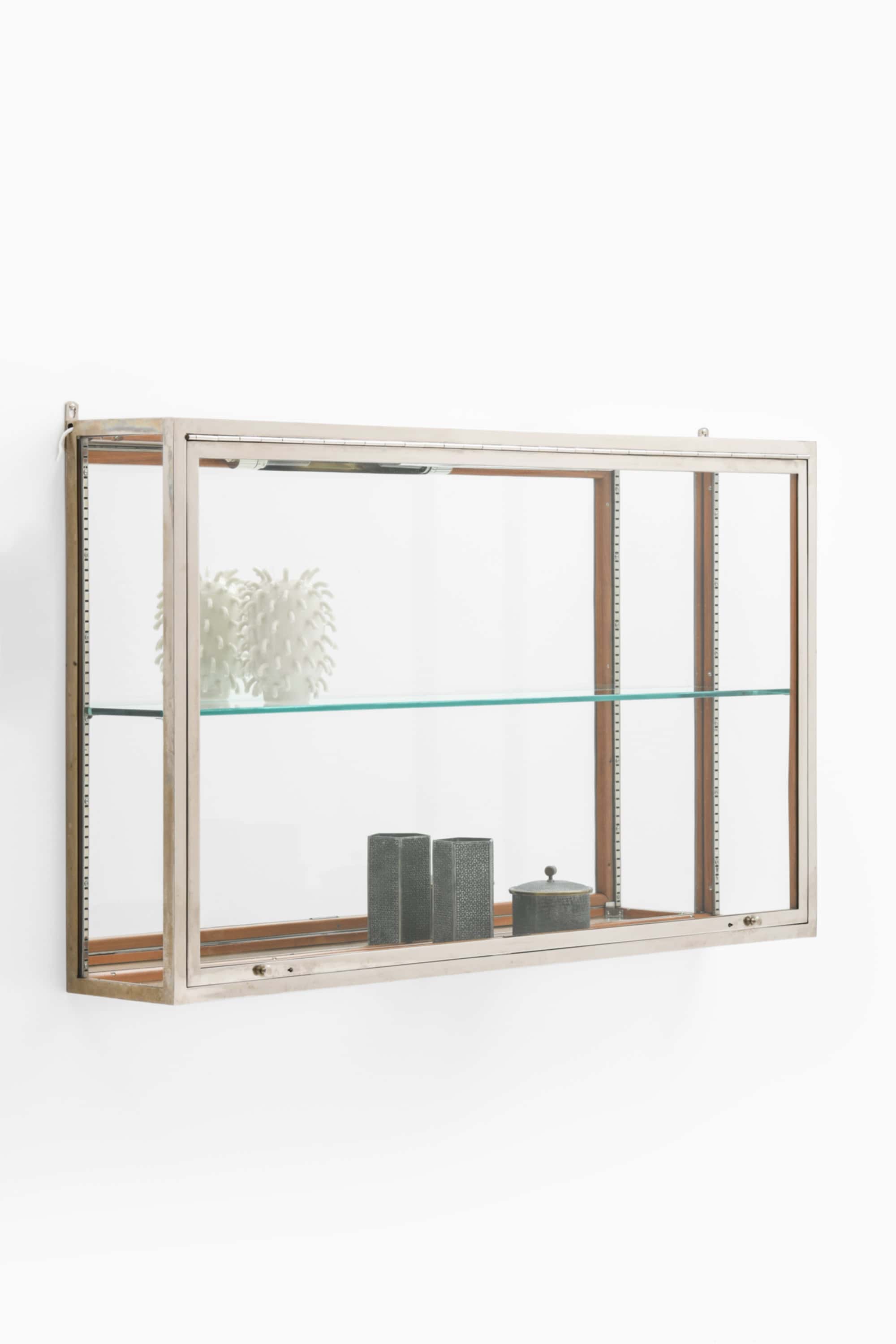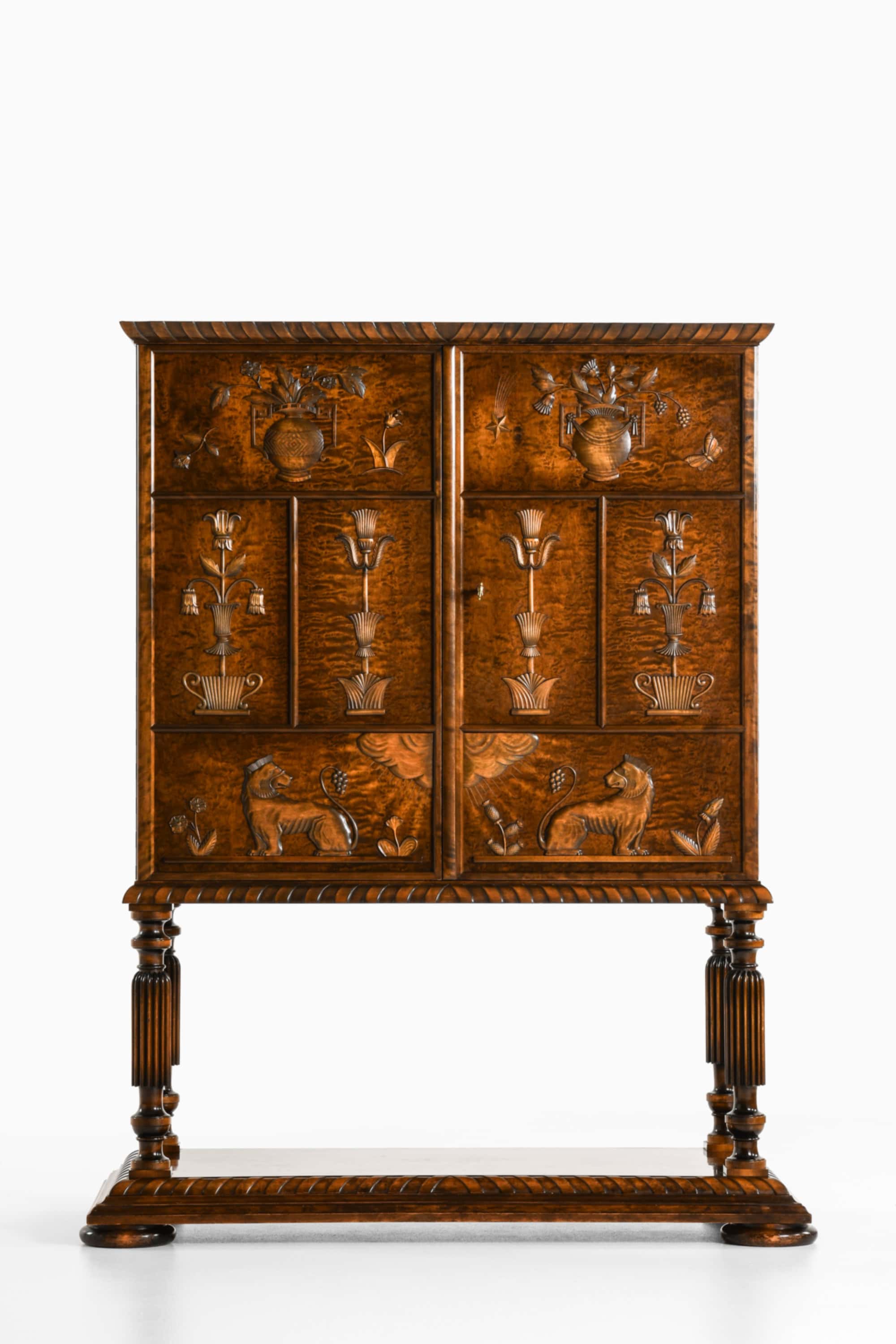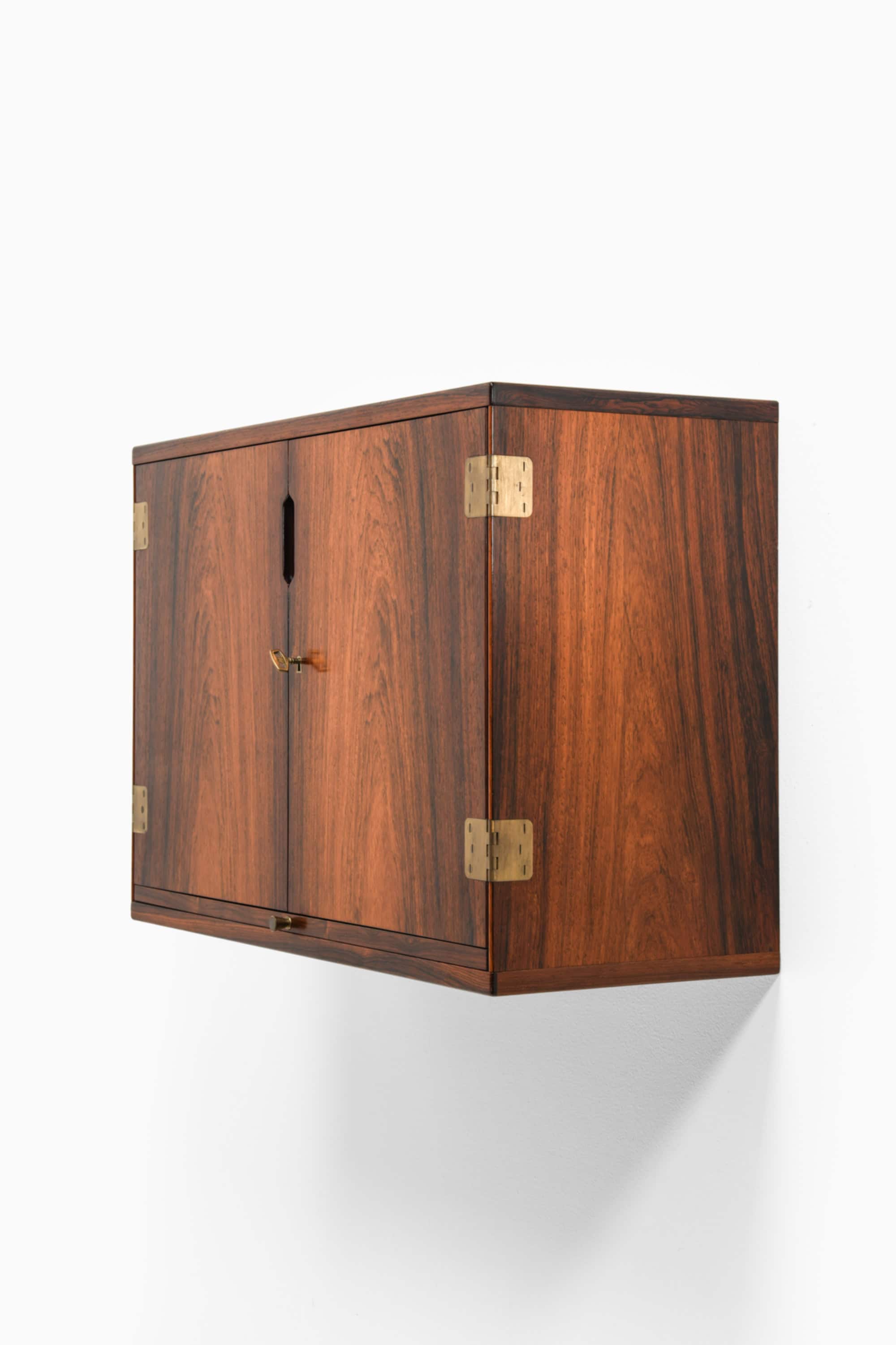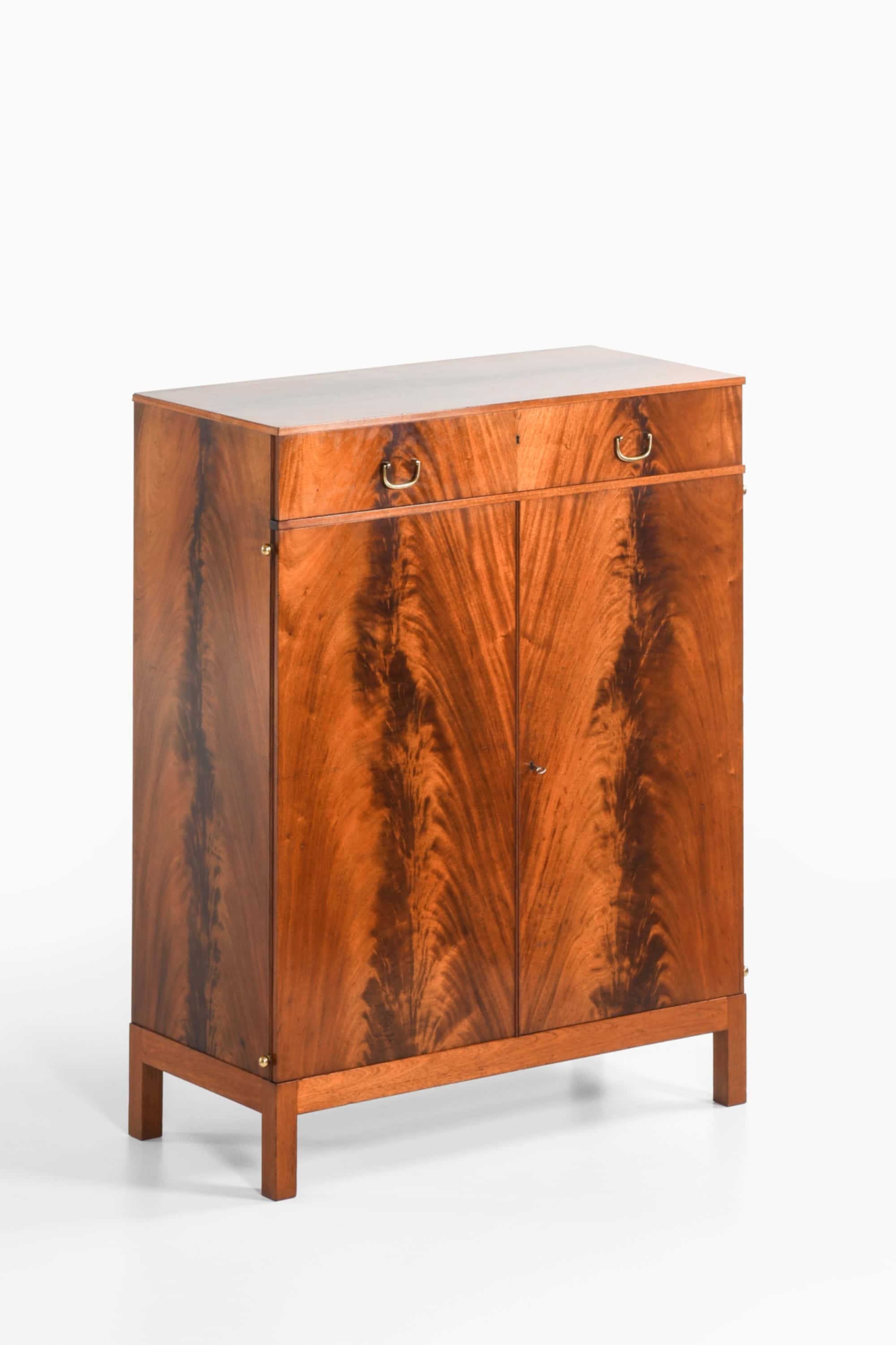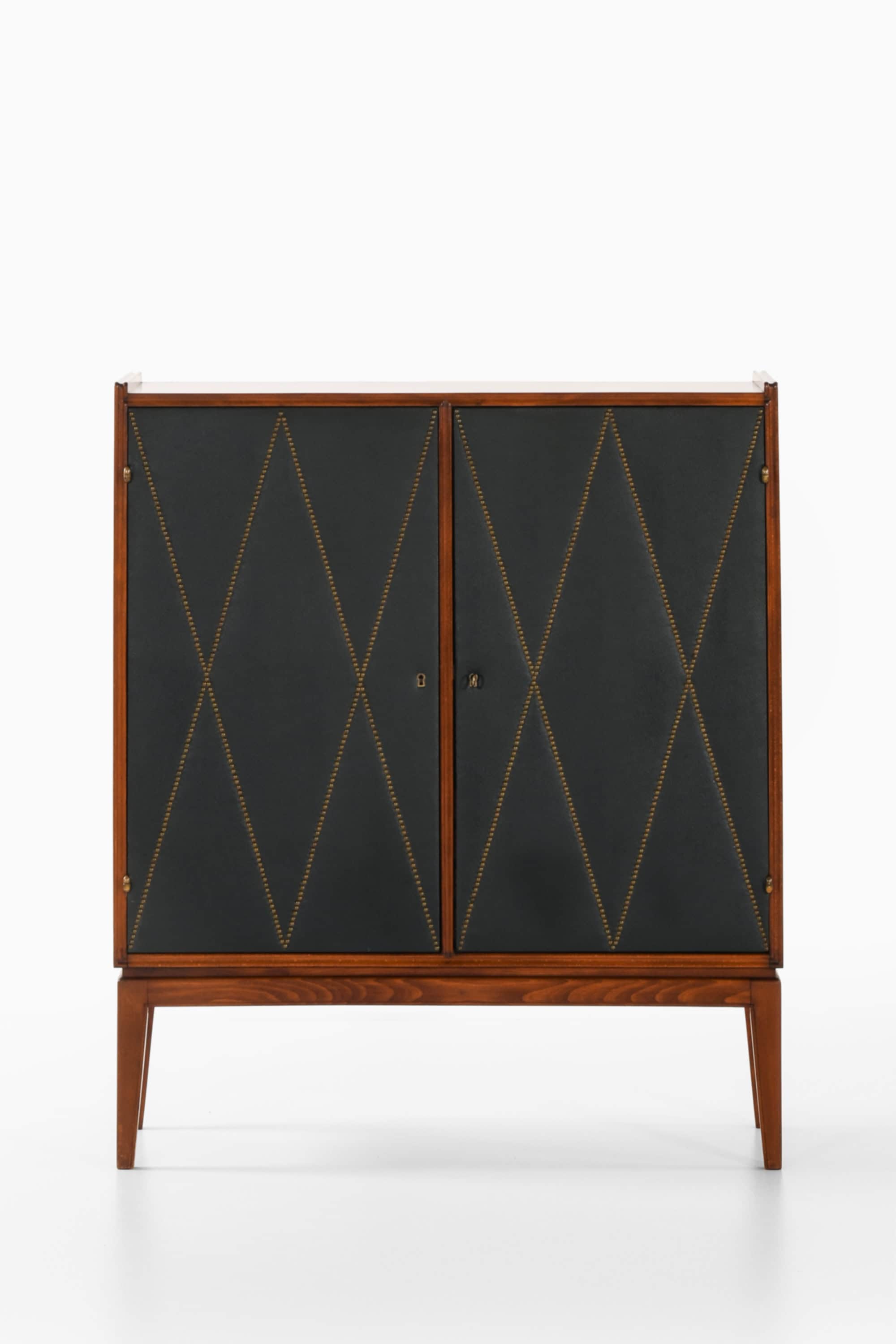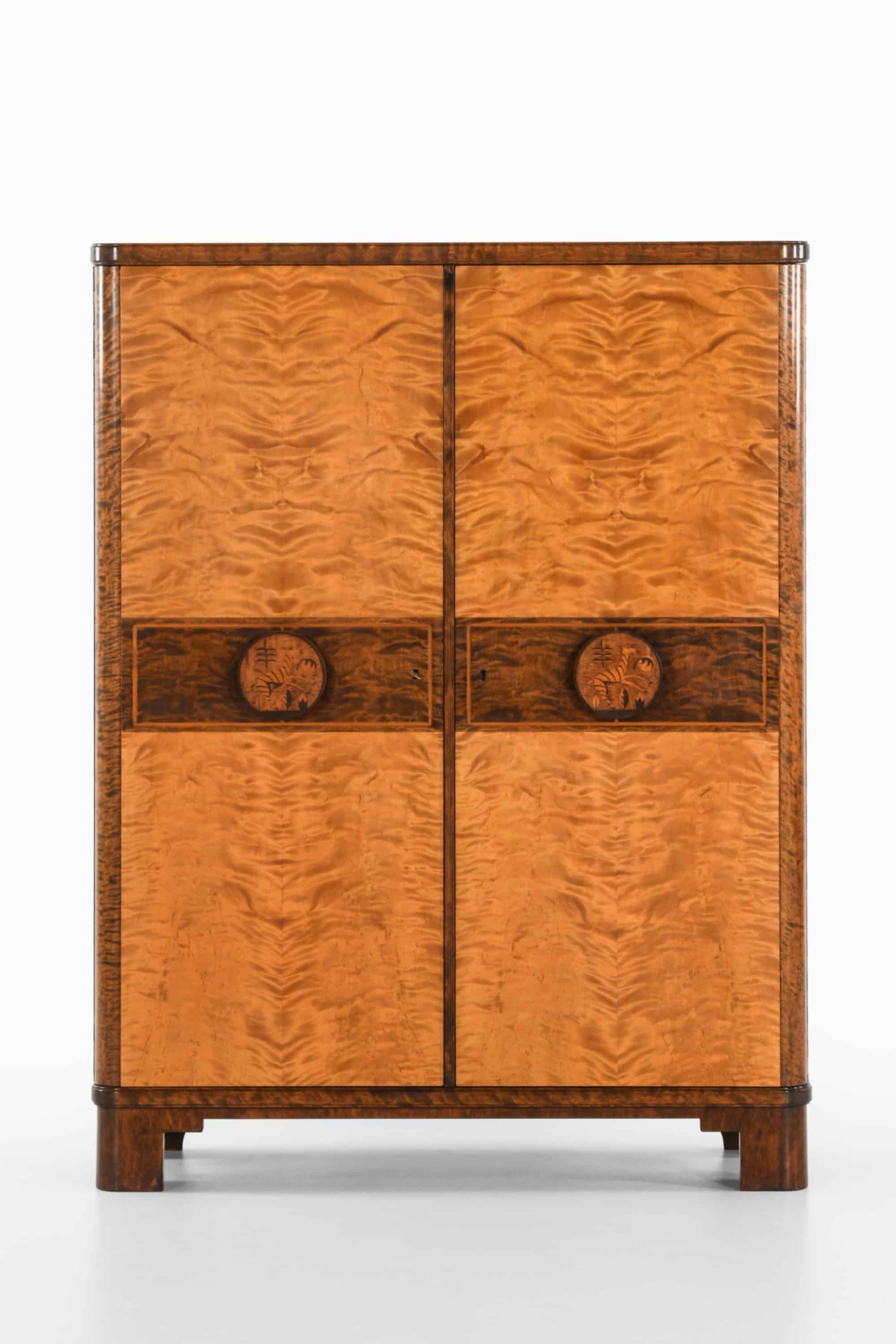Cabinet
This very rare cabinet, produced in Sweden during the Swedish Grace period, exemplifies the refined craftsmanship and elegant decorative principles that defined early 20th-century Scandinavian neoclassicism. Although the designer remains unknown, the cabinet’s form, material treatment, and provenance point to a work of high artisanal and cultural significance.
The cabinet is structured around a vertically oriented rectangular body with a balanced, symmetrical composition. Its silhouette is softened by gently rounded corners, a feature that tempers the architectural rigor of its form. It stands on four pronounced curved feet—sculptural in shape and integral to the visual foundation of the piece. These support a well-proportioned body that communicates solidity without heaviness.
The primary material is richly figured wood, with the surface finished in an elaborate veneer composition. The front panels are especially noteworthy, featuring a decorative interplay between elm burl inlays and surrounding mahogany veneer. The burl inlays are arranged in circular and rectangular motifs, creating a sophisticated geometric pattern across the doors. This ornamental scheme is characteristic of the Swedish Grace movement, which sought to balance classical influences with Art Deco geometry and restrained modernity. The refined surface treatment adds depth, rhythm, and visual interest, while the contrast in wood grain and color enhances the three-dimensional quality of the design.
Condition is very good vintage, with minimal signs of wear and a subtle, even patina across the wood surfaces. This aging process has enriched the natural color and grain of the veneer, emphasizing its depth and original finish. The structural integrity remains intact, and all decorative elements are preserved, reflecting the care and quality of both original manufacture and subsequent stewardship.
The provenance of this cabinet adds considerable cultural and historical dimension. It was originally owned by Ivar Kreuger (1880–1932), one of Sweden’s most influential industrialists and financiers of the early 20th century. The cabinet was used in his Berlin office, serving as part of the furnishings during a period when Kreuger’s financial empire was at its peak. Following Kreuger’s death and the ensuing bankruptcy of his company, Aktiebolaget Kreuger & Toll, the cabinet came into the possession of Elna Friberg, who was involved in the company’s bankruptcy administration between 1935 and 1941. This provenance not only confirms the cabinet’s early 20th-century origins but also connects it to a pivotal chapter in Swedish economic and political history.
Measuring 120 cm in width, 44 cm in depth, and 180 cm in height (47.2 x 17.3 x 70.9 inches), the cabinet stands as a commanding piece suited for both display and functional storage. It is an outstanding example of Swedish Grace-era furniture, distinguished by its geometric ornamentation, material richness, and historical association—making it a unique artifact of Scandinavian decorative arts and cultural history.
Provenance
Ivar Kreuger (1880‑1932), the cabinet was part of the interior of his office in Berlin. Elna Friberg (1903‑1999), employee of Aktiebolaget Kreuger & Toll's Bankruptcy Administration 1935‑1941.
Dimensions (cm) | W: 120 / D: 44 / H: 180 |
| Color | Brown |
| Decade | 1920s |
| Country | Sweden |
| Style | Scandinavian Modern, Swedish Grace |
| Material | Elm root, Mahogany |
| Item Number | 237200 |
